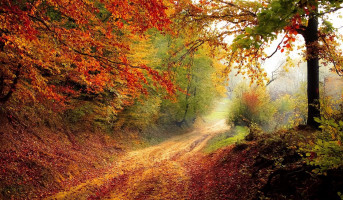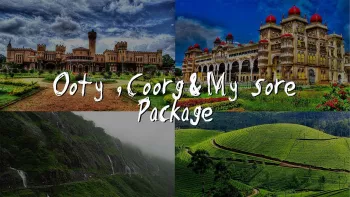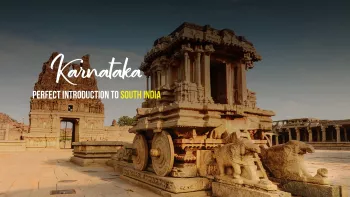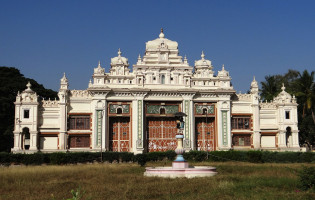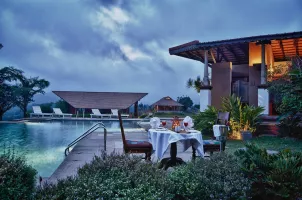Mysore Zoo Travel Guide
Mysore Zoo, also known as Sri Chamarajendra Zoological Gardens, is a popular tourist destination located in Mysore, Karnataka, India. Established in 1892, it is one of the oldest and most well-maintained zoos in the country. Mysore Zoo is famous for its rich biodiversity, housing a wide variety of animals, birds, and reptiles. The zoo plays a crucial role in conservation efforts and education about wildlife.Top Attractions in Mysore Zoo
- Majestic elephants
- Rare white tigers
- Giraffes and zebras
- Exotic birds in the aviary
- Spectacular Lion Safari
Mysore Zoo is Famous for
Mysore Zoo is most famous for its diverse collection of wildlife and its contribution to wildlife conservation.Top Attractions in Mysore Zoo
- Interacting with elephants at the Elephant Sanctuary
- Exploring the heritage buildings inside the zoo premises
- Watching the engaging animal shows and feedings
- Taking a leisurely walk around the beautifully landscaped gardens
- Learning about wildlife conservation at the zoo's educational exhibits
What's Great about Travelling to Mysore Zoo?
- Perfect for families and animal lovers
- Educational and enriching experience
- Beautifully maintained and clean premises
What's Not So Great about Travelling to Mysore Zoo?
- Can get crowded during peak tourist seasons
- Limited food options inside the zoo
- Some areas may not be wheelchair accessible
Travel Tips for Mysore Zoo
- Carry water and snacks for the visit
- Wear comfortable walking shoes
- Follow the zoo rules and regulations for safety
Important Mysore Zoo trip information
- Ideal Duration: A half-day to explore the zoo thoroughly
- Best Time to Visit: Early morning or late afternoon to avoid crowds
- Nearby Airports and Railway Stations: Mysore Airport and Mysore Junction Railway Station
Per Person
16,700
*EXCLUDING APPLICABLE TAXES 5.0 Ratings
( 157 Reviews )
( 157 Reviews )
Per Person
20,500
*EXCLUDING APPLICABLE TAXES 4.3 Ratings
( 218 Reviews )
( 218 Reviews )
Per Person
14,500
*EXCLUDING APPLICABLE TAXES 4.1 Ratings
( 56 Reviews )
( 56 Reviews )
Per Person
16,500
*EXCLUDING APPLICABLE TAXES 4.3 Ratings
( 218 Reviews )
( 218 Reviews )
Per Person
14,500
*EXCLUDING APPLICABLE TAXES 5.0 Ratings
( 157 Reviews )
( 157 Reviews )
Per Person
32,599
*EXCLUDING APPLICABLE TAXES 4.3 Ratings
( 389 Reviews )
( 389 Reviews )
FAQ's on Mysore Zoo
Q1: What is the best time to visit Mysore Zoo?
The best time to visit Mysore Zoo is during the winter months from October to March when the weather is pleasant and ideal for exploring outdoor attractions. This period also coincides with the peak tourist season when the zoo is bustling with activity and events.
Q2: Do I need a visa to travel to Mysore Zoo?
No, you do not need a visa specifically to visit Mysore Zoo as it is located within India. However, if you are an international visitor, you will need a valid visa to enter India, and it is advisable to check the specific visa requirements based on your nationality.
Q3: What are the must-visit attractions in Mysore Zoo?
Some of the must-visit attractions in Mysore Zoo include the iconic Mysore Palace, Chamundi Hill with its temple offering panoramic views, the vibrant Devaraja Market for shopping, and the Brindavan Gardens known for its musical fountain show.
Q4: Is Mysore Zoo a safe place to travel?
Mysore Zoo is generally a safe destination for travelers. It is recommended to take usual precautions like avoiding isolated areas at night and being mindful of your belongings in crowded places.
Q5: What is the local currency in Mysore Zoo and can I use credit cards?
The local currency in Mysore Zoo is the Indian Rupee (INR). While credit cards are widely accepted in hotels, restaurants, and larger stores, it is advisable to carry some cash for smaller establishments and local markets. ATMs are also readily available.
Q6: What is the local cuisine like in Mysore Zoo?
Mysore Zoo offers a rich culinary experience with South Indian flavors. Must-try dishes include Masala Dosa, Bisi Bele Bath, Mysore Pak (a sweet delicacy), and filter coffee. Vegetarian options are plentiful, but there are also non-vegetarian dishes available for those who prefer them.
Q7: What transportation options are available in Mysore Zoo?
Transportation options in Mysore Zoo include public buses, auto-rickshaws, and taxis for getting around the city. Rental services for bicycles and cars are also available for more independent travel. Hiring a local guide can be a convenient way to explore the area.
Q8: Are there any cultural norms or etiquette I should be aware of when visiting Mysore Zoo?
When visiting Mysore Zoo, it is important to respect local customs such as removing shoes before entering temples, dressing modestly, and asking for permission before taking photographs of people. Greeting with "Namaste" is a common practice, and showing respect to elders is highly valued in Indian culture.
Q9: I am a travel agent. How can I buy travel leads of Mysore Zoo?
Register yourself as a travel agent at agents.tripclap.com and then you can buy travel leads to Mysore Zoo once your account is approved. For more details contact our support team at +91-8069186564 or support@tripclap.com
